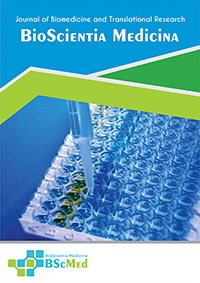Main Article Content
Abstract
Background: Weber syndrome is a classic brainstem stroke syndrome resulting from an ischemic lesion in the ventral midbrain. While historically defined by its striking clinical features—ipsilateral oculomotor nerve palsy and contralateral hemiparesis—its modern relevance lies in its direct causation by common, modifiable vascular risk factors. This report uses a quintessential case of Weber syndrome as a didactic tool to illustrate the profound microvascular consequences of a specific, severe metabolic phenotype.
Case presentation: A 60-year-old female with a history of medication non-adherence for hypertension and hypercholesterolemia presented with acute left hemiparesis, right ptosis, and diplopia. Examination confirmed a right oculomotor palsy and left hemiparesis. Her Body Mass Index was 28.5 kg/m². Laboratory workup revealed a severe mixed dyslipidemia (LDL-C 168 mg/dL, Triglycerides 218 mg/dL). Brain MRI confirmed an acute infarct in the right ventral mesencephalon. Vascular imaging was unremarkable, pointing towards intrinsic small vessel disease. A comprehensive, multidisciplinary management plan was initiated, focusing on aggressive medical therapy, intensive rehabilitation, and strategies to overcome barriers to medication adherence.
Conclusion: This case highlights the elegant yet unforgiving precision of neuroanatomy and the powerful diagnostic utility of modern neuroimaging. More profoundly, it demonstrates the direct pathophysiological link between severe atherogenic dyslipidemia and the occlusion of a single, critical perforating brainstem artery. The patient’s significant functional recovery underscores that a holistic approach—combining evidence-based pharmacotherapy with a robust, patient-centered rehabilitation program and a dedicated strategy to ensure long-term adherence—is paramount to optimizing outcomes after a debilitating stroke.
Keywords
Article Details
As our aim is to disseminate original research article, hence the publishing right is a necessary one. The publishing right is needed in order to reach the agreement between the author and publisher. As the journal is fully open access, the authors will sign an exclusive license agreement.
The authors have the right to:
- Share their article in the same ways permitted to third parties under the relevant user license.
- Retain copyright, patent, trademark and other intellectual property rights including research data.
- Proper attribution and credit for the published work.
For the open access article, the publisher is granted to the following right.
- The non-exclusive right to publish the article and grant right to others.
- For the published article, the publisher applied for the Creative Commons Attribution-NonCommercial-ShareAlike 4.0 International License.





